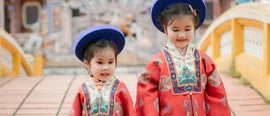
HUMANTIES AND SOCIAL SCIENCES (HASS)
Introduction
Understanding people, places, cultures, and surroundings is the main goal of early childhood humanities and social sciences (HASS). It fosters a sense of belonging, empathy, and cultural knowledge. Children investigate their neighborhood, identity, and ancestry through HASS, as well as the larger world. In order to develop self-assured, interconnected learners, the EYLF (DEEWR, 2022) encourages learning about social and cultural diversity. Storytelling, role-playing, mapping, and artistic endeavors that showcase a range of viewpoints are examples of creative approaches to HASS. Children who have these experiences grow up to be engaged, knowledgeable citizens who can think critically and make thoughtful, creative contributions to their communities.
Theories and Views of Creativity
Since Vygotsky's sociocultural theory places a strong focus on social interaction as a means of learning, HASS provides an ideal setting for innovative shared meaning-making. Jerome Bruner's spiral curriculum encourages deeper inquiry by supporting the revisitation of social themes in progressively more complicated ways. Creative HASS activities cultivate Gardner's many intelligences, especially the interpersonal and intrapersonal intelligences. Anna Craft's "possibility thinking" encourages children to envision other scenarios and viewpoints. From the perspective of Reggio Emilia, HASS encourages children to investigate their surroundings using a variety of expressive languages, such as maps, models, and stories. When taken as a whole, these viewpoints present HASS as a field full with chances for critical, creative, and cooperative thought.


Materials, Digital Technologies, and Resources
Multicultural storybooks, maps, globes, and collections of family photos are examples of HASS materials. Role-playing is encouraged by culturally themed dress-up clothing and accessories. Place exploration is aided by representations of the natural and constructed environments, such as small landmarks. Virtual museum tours and Google Earth are examples of digital tools that extend learning outside of the classroom. Platforms for storytelling, like StoryJumper, enable children to share their cultural stories. Having community members available for guest lectures promotes real-world learning. Flags, maps, and dioramas can be made with arts and crafts supplies. Audio and video recording equipment are useful for documenting project-based learning and gathering oral histories.
Experiences in Learning

0-2 Years
- Family Photo Exploration: By handling and examining family photos, infants develop an understanding of their identities.
- Cultural Music Listening: Early exposure to music from other civilizations fosters an appreciation for culture.

2-3 Years
- Dress-Up Around the World: Playing roles in traditional clothing promotes empathy and a global viewpoint.
- Easy Community Map: Children mark well-known locations on a floor map.

3-5 Years
- Storytelling from Various Cultures: Children's perspectives are expanded by shared narratives.
- Community Helper Role-Play: Role-playing helps people understand their duties in society.

6-8 Years
- Oral History Interviews: Children document discussions about the past with elders or family members.
- Virtual Field Trip: Using Google Earth to explore sites stimulates interest and conversation.
Create Your Own Website With Webador